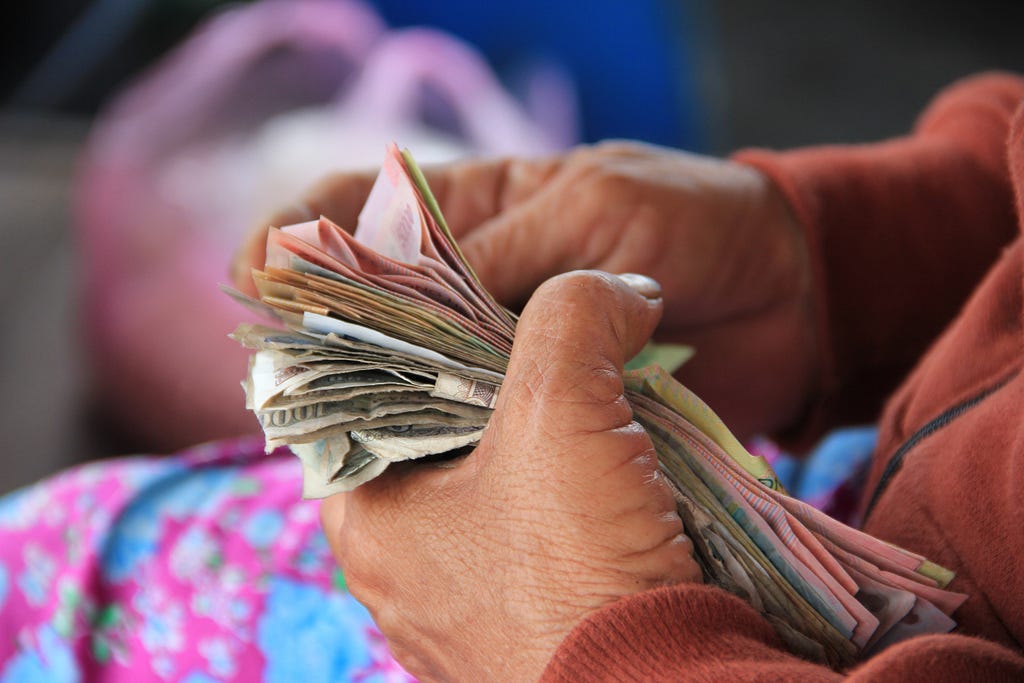Latest news about Bitcoin and all cryptocurrencies. Your daily crypto news habit.
This article is part of a weekly series called infourminutes. They publish a summary of crypto or blockchain whitepaper every week. Please subscribe here.
 Photo by Niels Steeman on Unsplash
Photo by Niels Steeman on Unsplash
Introduction:
In Bitcoin network, the wait time to confirm payments was long. It usually took minutes or even sometimes hours for transactions to “get confirmed.” This hampered mainstream adoption, especially merchant usage and counter checkout.
It was, but, one of the side effects of a decentralized network. The participating nodes had to synchronize the latest block and wait for a fixed time to confirm transactions in the blockchain.
Dash aims to be a payment system for regular day-to-day activities. Hence, it focused on the ability to confirm payments instantaneously. It also mainly focused to send transactions securely & privately in the network.
How Dash solves privacy and instant pay?
A full node in bitcoin allows participants on the network to receive updates about events. A full node is significant for the health of the network.
As traffic increases, the cost to run a full node increases substantially. Since there is no incentive to run a dedicated full node, people switch to lighter clients. Lighter clients don’t help the network at all.
Introducing Dash Masternode network:
Dash introduces a concept of a Masternode network. It is a secondary network, which provides a level of service and in return, they earn extra dividends.
What is a Masternode?
Masternodes are full nodes but can provide any number of extra services to the network and have a bond of collateral (1,000DASH) to participate. The Masternodes network keeps the security safe and allows the participants to earn interest and also reduce the volatility of the currency.
What are the characteristics of the Masternode network?
An account consists of -
- Nodes on the network perform sensitive tasks in a trustless manner.
- A node must store 1,000DASH to become a masternode.
- Masternodes get approximately 45% of the total block reward. (45% of the rewards to the miners, 45% to the masternodes, and 10% to the self-governing communities)
- There is a hard and a soft limit of the active number of nodes on the network. The hard limit is the total number of DASH in circulation divided by 1000DASH — there can ever be so much DASH. The soft limit, on the other hand, is imposed by the price it costs to acquire a node and the limited liquidity on exchanges.
Masternodes are a Trustless Network:
In a Masternode network, a few pseudo-random nodes perform the work, without having the whole network to do the same tasks. No single entity can control the outcome of a task performed in the Masternode network.
Checks and balances in the Masternode network:
The nodes in the network must ping the rest of the network to ensure they are active. The network pseudo-randomly selects two nodes per block to ensure that they are active. Approximately 1% of the network is checked in each block, and the entire network is checked about six times per day.
An attacker has to be selected six times in a row to trick this system. Violations are canceled out by the system as the quorum system selects other nodes.
Private Transactions: PrivateSend
Privacy is a vital feature in Dash. The Dash team aims to have a standard trust-less implementation for improving the privacy of its users, along with a high degree of privacy in their clients.
PrivateSend is an improved and extended version of the CoinJoin. CoinJoin is just merging transactions to obfuscate the original transactions. The vulnerability of CoinJoin is that the original transactions can be traced back simply by various backtracking methods.
Besides the core concept of CoinJoin, Dash implements a series of improvements such as decentralization, strong anonymity by using a chaining approach, denominations, and passive ahead-of-time mixing.
PrivateSend takes several inputs and merges them such that they cannot be uncoupled after that. The merging requires at least three participants. The denominations in operation must be either 0.1DASH, 1DASH, 10DASH, and 100DASH.
Instant Transactions: InstantSend
By utilizing the Masternode network, users can send and receive instant irreversible transactions.
The network sets a transaction lock, which enforces the inputs of the transactions to be spendable only in those specific transactions. It takes around four seconds for the quorum to form and to set the transaction lock.
InstantSend opens up the door for vendors to use mobile devices instead of traditional POS system for the web.
Conclusion:
Dash builds on top of Bitcoin to offer instant & private transactions. Dash accomplishes them by utilizing an incentivized two-tier model called the Masternode network, rather than the existing single-tier model in other crypto-currencies such as Bitcoin.
Thanks for reading! If you believe in the technological impact blockchain can have and liked what you just read, please click and hold 👏, or leave a comment below. It will help us reach a greater audience.
This story was written by Prashish Rajbhandari, and was originally published on infourminutes.
To read the weekly summary of whitepapers, please subscribe to the mailing list.
Are you on Twitter? Please follow us to stay updated.
Dissecting Dash whitepaper in four minutes was originally published in Hacker Noon on Medium, where people are continuing the conversation by highlighting and responding to this story.
Disclaimer
The views and opinions expressed in this article are solely those of the authors and do not reflect the views of Bitcoin Insider. Every investment and trading move involves risk - this is especially true for cryptocurrencies given their volatility. We strongly advise our readers to conduct their own research when making a decision.
